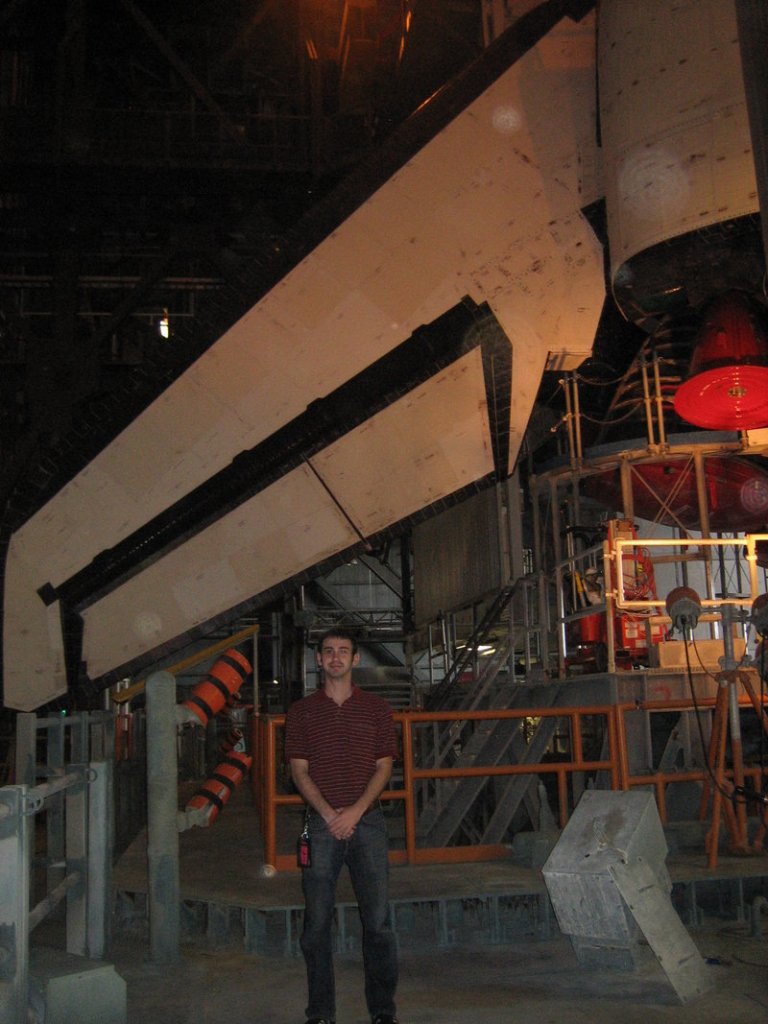This story was corrected to reflect the proper spelling of Mike Nicholas’s name.
“We are good to go for launch.”
That was the message Westbrook High School graduate Mike Nicholas delivered to NASA officials a week ago, urging them to approve the launch of the space shuttle Discovery.
Officials agreed. Discovery lifted off early this morning from Cape Canaveral in Florida.
Nicholas, a 28-year-old who works for Boeing, is the lead engineer overseeing the thermal protection system for Discovery. That’s the tile skin that covers the shuttle and protects it from burning up when it descends into the atmosphere on landing.
Nicholas’ job is to make sure the shuttle is safe to fly and then monitor the tiles while the shuttle is in orbit.
After watching the shuttle take off this morning, he’ll fly to Texas to observe the shuttle from NASA’s Mission Control Center in Houston.
Nicholas said that being part of the space program is a life-long dream. He said he was 4 or 5 years old when he saw a space shuttle launch while on vacation in Florida with his parents.
“I was just hooked,” he said. “That is what I wanted to do.”
He still has the bright-silver astronaut outfit he wore that day. It’s stored in a closet at his mother’s home in Portland.
Nicholas excelled at chemistry at Westbrook High. Although he lived in Portland, he attended the high school because he played trombone and wanted to be in the school’s outstanding jazz band and marching band.
After graduating, he studied ceramic engineering at Alfred University in New York state. Ceramics are nonmetallic, inorganic materials that are processed at high temperatures.
The tiles that cover the space shuttle are essentially strands of highly refined glass and a large amount of air, buffering the shuttle from the 1,800- to 2,200-degree temperatures that occur during re-entry, Nicholas said.
While the vast majority of the tiles are bonded onto the shuttle, some are attached using plugs and inserts so they can be removed.
An in-orbit inspection of the space shuttle Endeavour during its most recent flight showed a ceramic insert protruding about 0.4 inches from the tile surface between two space shuttle windows. Engineers inspected the rest of the Endeavour and found another protruding insert near another window.
Scientists worried at the time that an insert could break away and punch a hole through the shuttle’s protective tiles, resulting in the kind of catastrophic overheating that destroyed the Columbia in 2003 when it disintegrated over Texas during re-entry.
While engineers inspected most of the Discovery inserts, concerns about the payload bay door surfaced too late for direct inspection because the shuttle was already on the launching pad.
Instead, an engineering team lead by Nicholas completed a stress analysis to assess damage potential. Members determined that the insert had sufficient energy to damage the shuttle, but they also concluded that the odds of one breaking free from the payload door was very remote.
NASA managers agreed, and approval for launch was granted without any dissenting opinions.
For Nicholas, it was a proud moment that his recommendation was accepted.
Since the disasters of the Challenger and Columbia, NASA has developed a decision-making process that brings forward dissenting opinions that are completed vetted, he said.
He said he has no worries for the mission scheduled to begin this morning.
“We are flying safer now than we have ever flown,” he said.
Staff Writer Tom Bell can be contacted at 791-6369 or at:
tbell@pressherald.com
Copy the Story Link
Send questions/comments to the editors.



Success. Please wait for the page to reload. If the page does not reload within 5 seconds, please refresh the page.
Enter your email and password to access comments.
Hi, to comment on stories you must . This profile is in addition to your subscription and website login.
Already have a commenting profile? .
Invalid username/password.
Please check your email to confirm and complete your registration.
Only subscribers are eligible to post comments. Please subscribe or login first for digital access. Here’s why.
Use the form below to reset your password. When you've submitted your account email, we will send an email with a reset code.